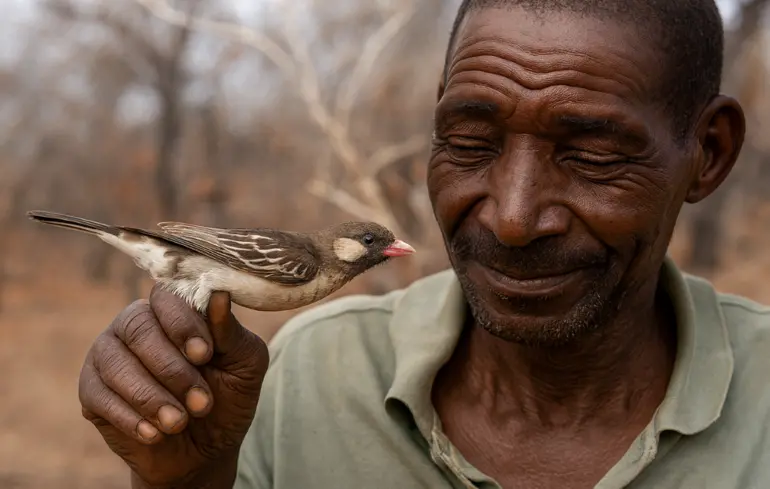Ancient African Tradition of Human-Bird Cooperation in Honey Hunting and Its Modern Revival

In Africa, a unique and ancient method of hunting honey with the help of bird partners has persisted, revealing a fascinating example of mutualism—an ecological relationship where both parties benefit.
This practice, primarily observed in Eswatini (formerly Swaziland), involves hunters working together with the Great Woshebird (Indicator indicator) to raid wild beehive nests.
The birds assist by tearing apart the combs, allowing humans to access honey and beeswax safely, while the birds benefit from the insects and larvae within the hives.
This interaction exemplifies true mutualism, where both species remain independent and capable of survival outside the partnership, contrasting with domestication, which often results in dependent animals.
Historically, instances of human cooperation with marine mammals like orcas and dolphins—working alongside whalers or fishermen—have been recorded, but such interactions are rare and not widespread.
The relationship with Woshebirds, however, appears to be rooted in antiquity, possibly extending thousands or even millions of years back, supported by their unique optical feather properties that once facilitated precise targeting during hunting.
Sadly, this traditional practice has waned across Africa, with traditional knowledge often lost if it proves unprofitable.
In Eswatini, however, the tradition survives, especially among young men who, while herding cattle, also scout for bees and raid their nests, passing down the skills both vertically through generations and horizontally among peers.
Scientists warn that about 500 bird species might face extinction within the next century, making the conservation of such cultural practices even more urgent.
Today, modernized versions of this hunting method have emerged: instead of traditional dried fruits used as whistles, teenagers now craft signals from modern materials like deodorant balls.
Despite these adaptations, the core principle endures, reaffirming scientists’ confidence in the resilience of this form of mutualism.
This example underscores the importance of cultural and ecological traditions in maintaining biodiversity and sustainable human-nature relationships amid rapid environmental change.

